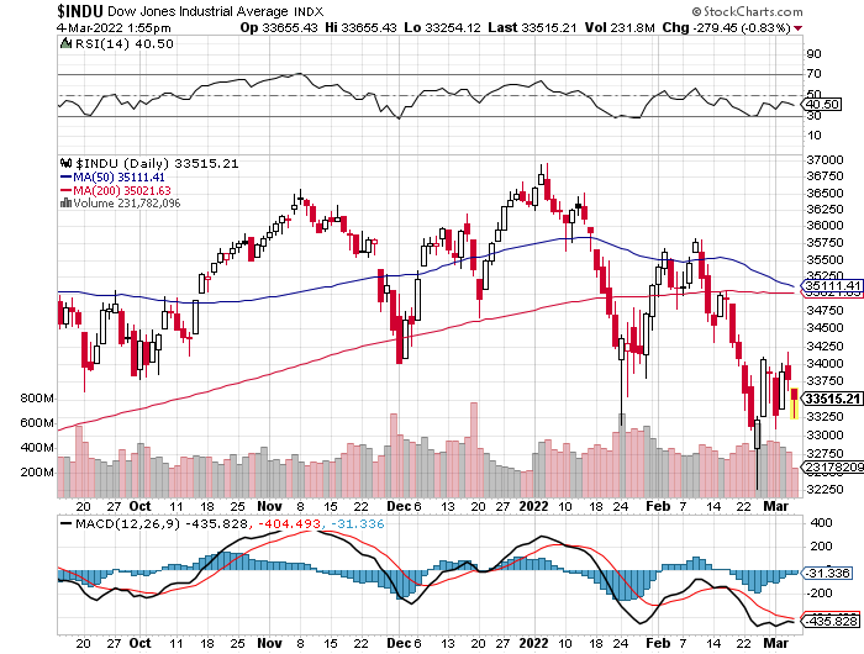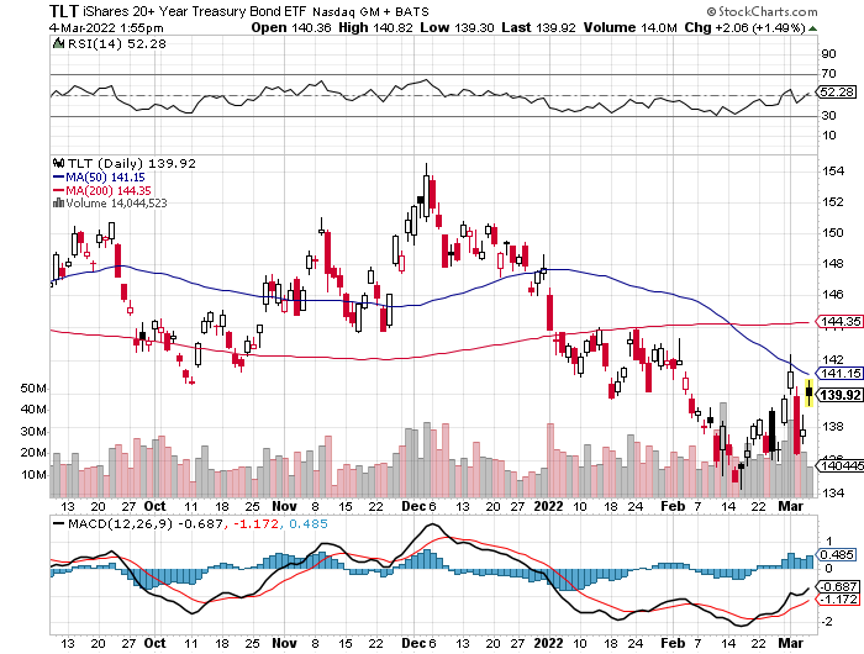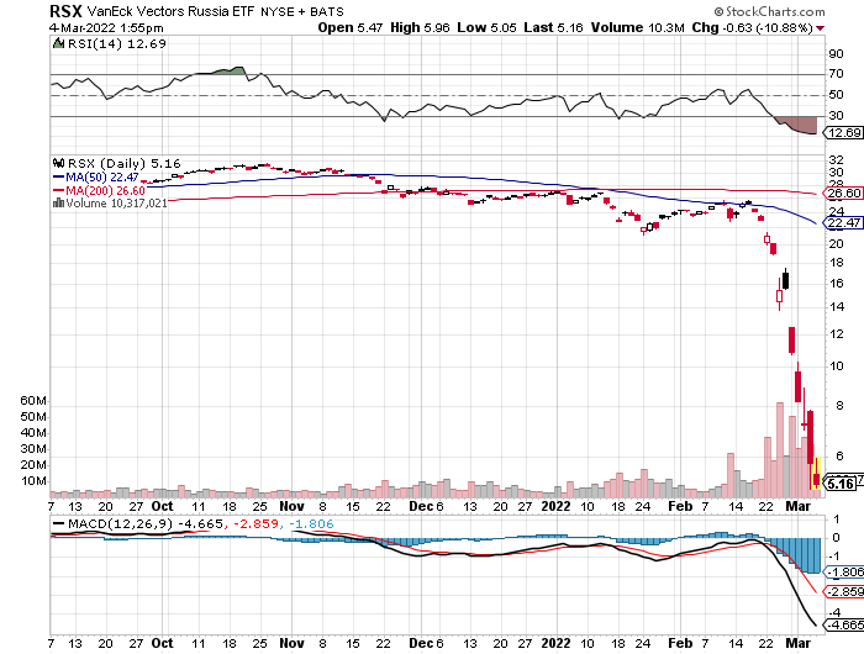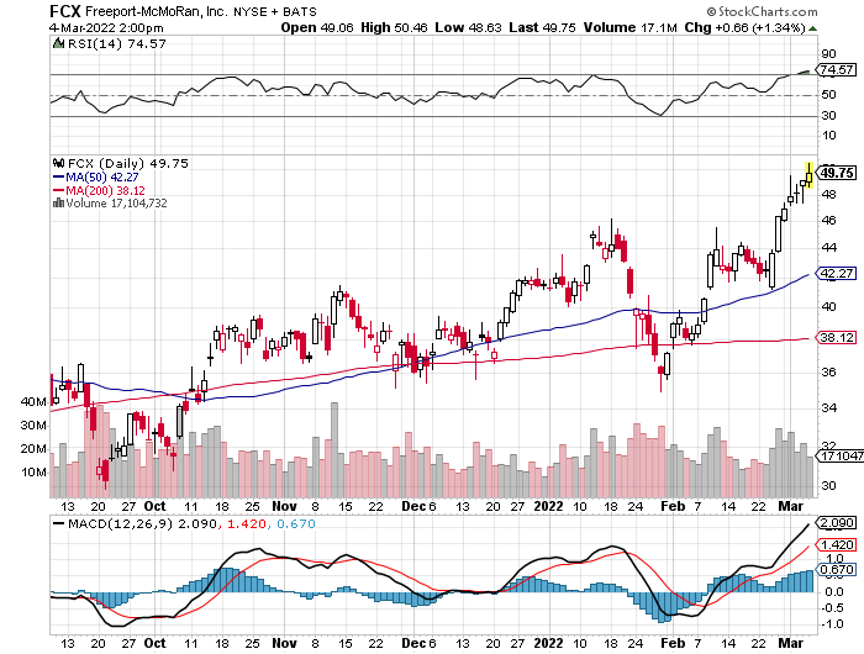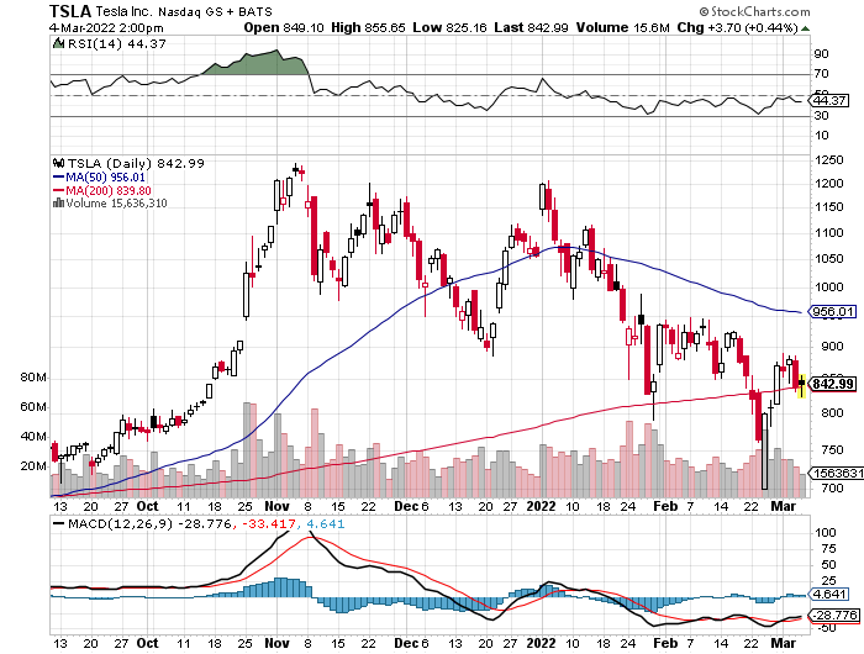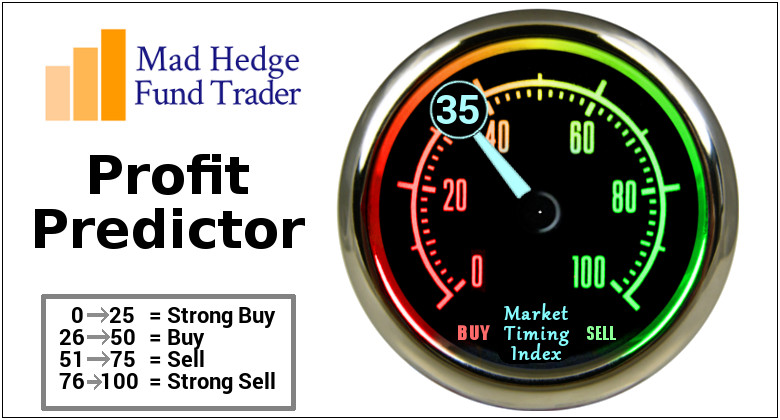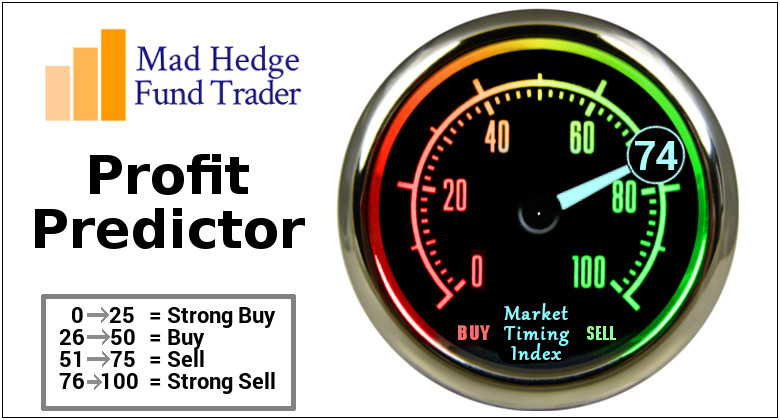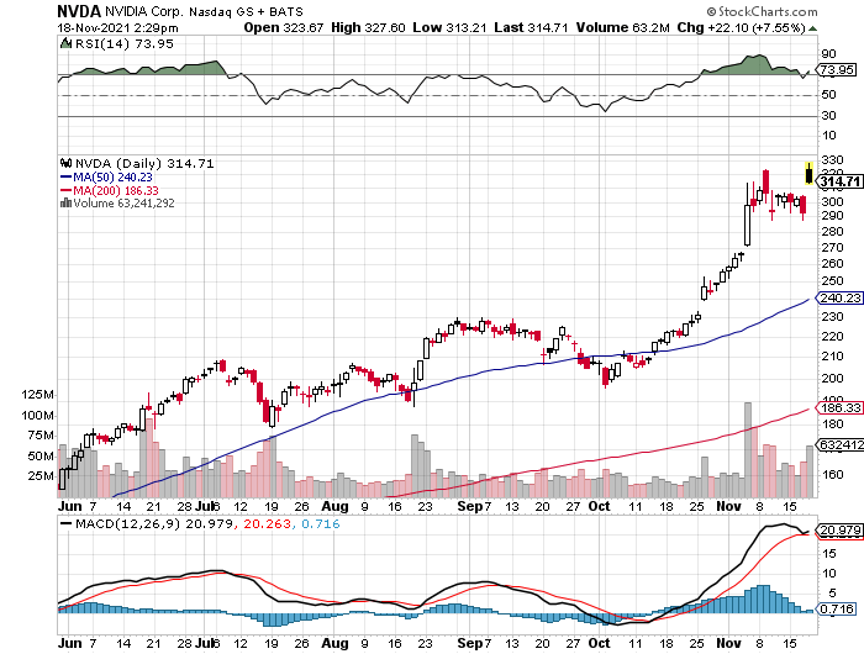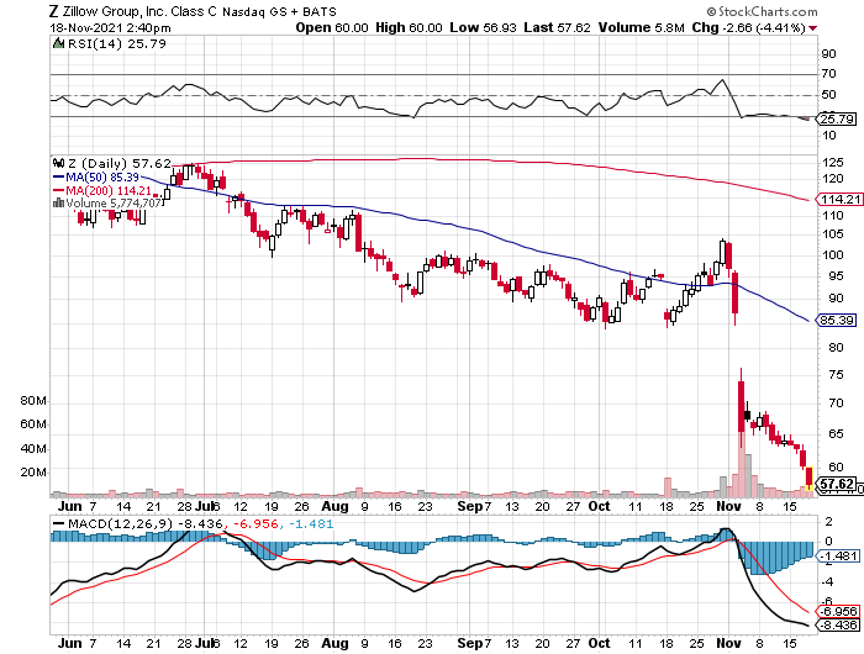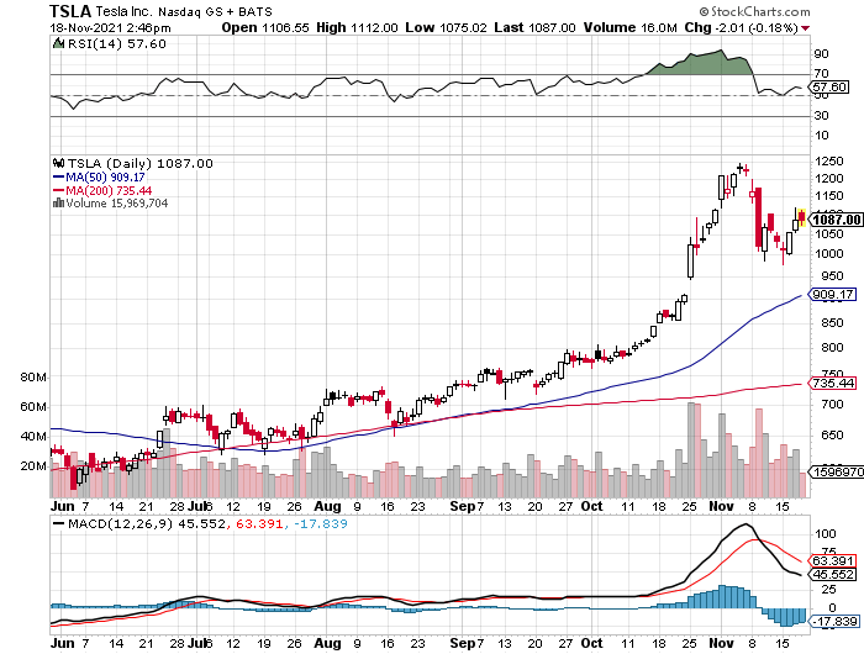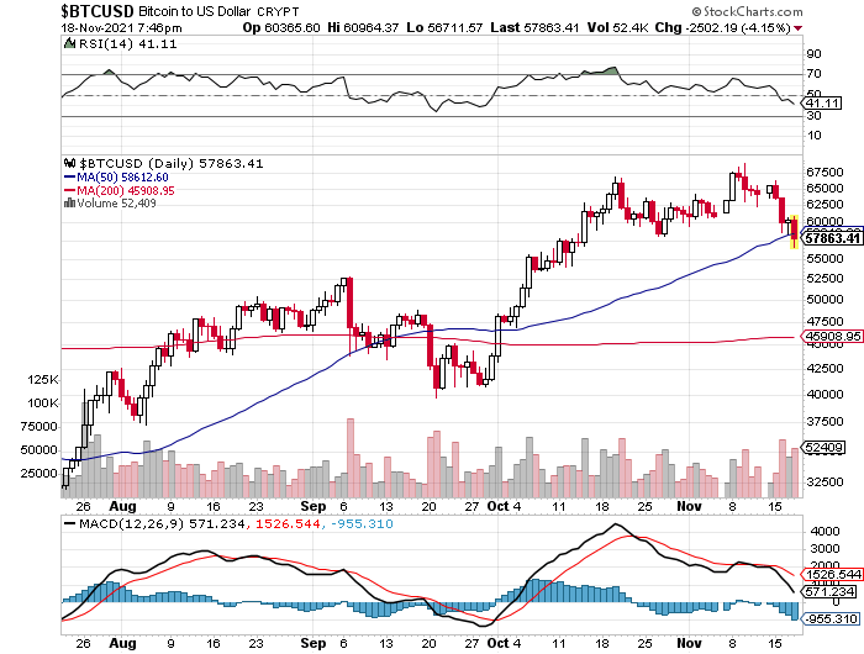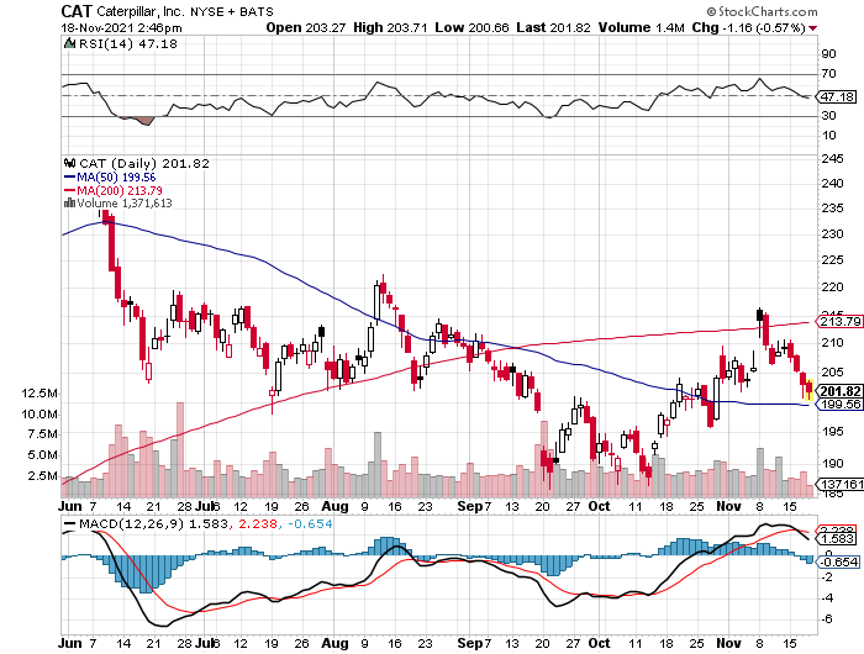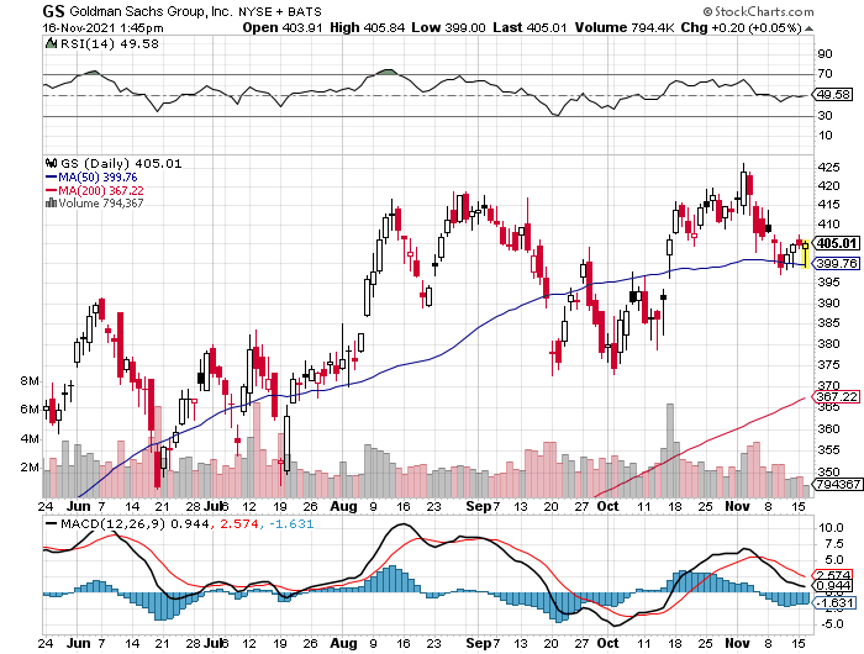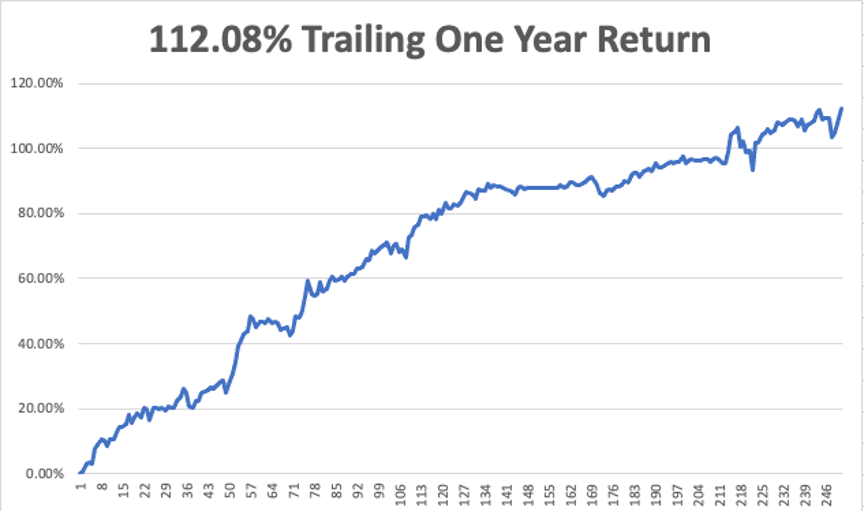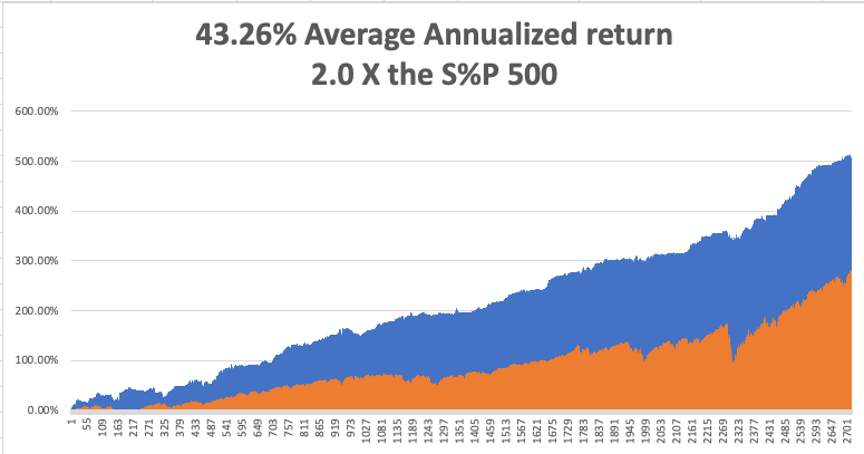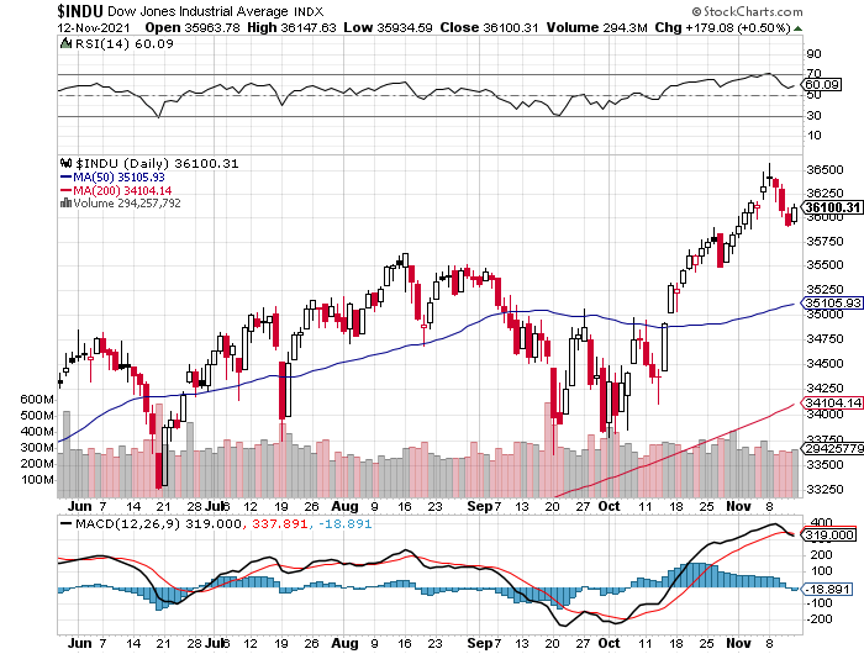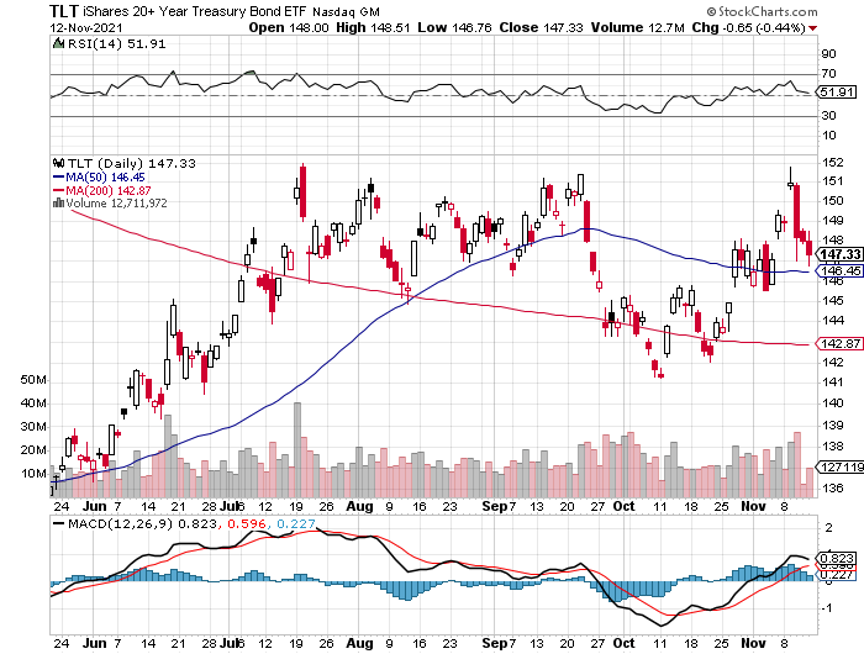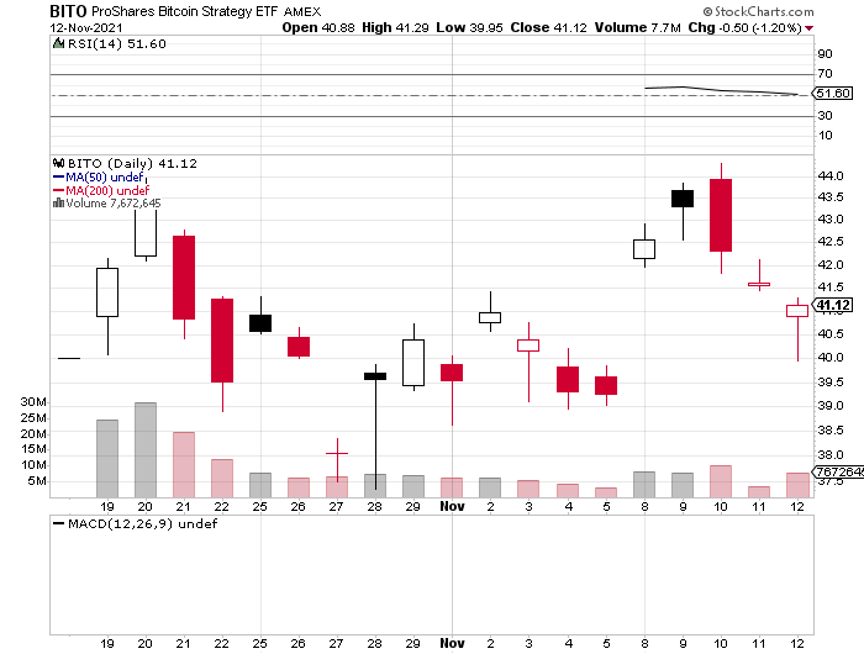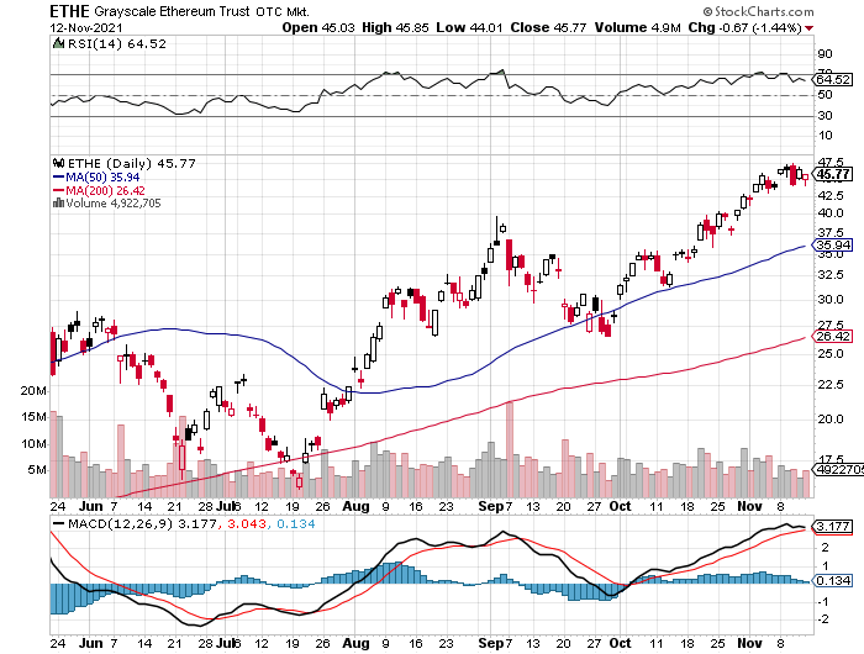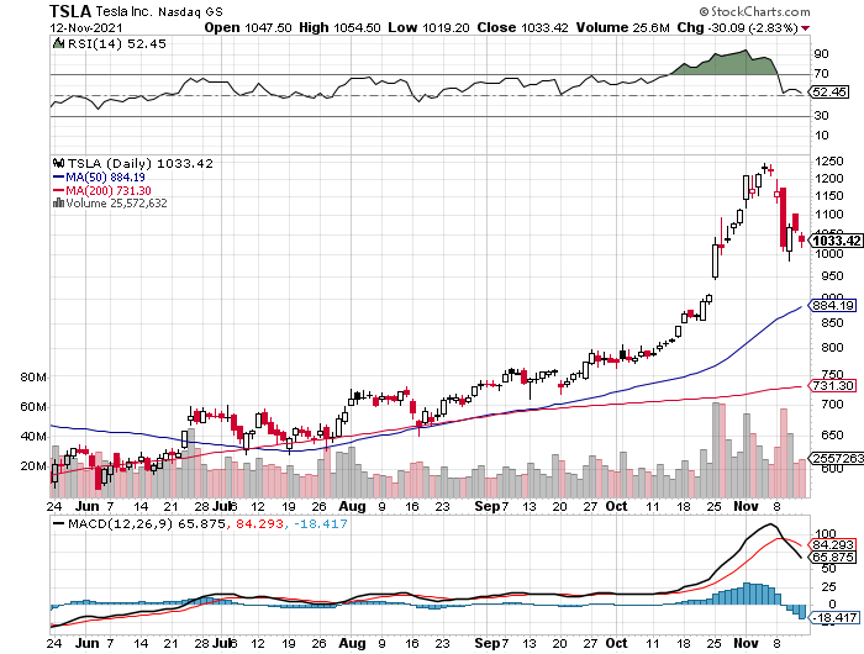Below please find subscribers’ Q&A for the March 2 Mad Hedge Fund Trader Global Strategy Webinar broadcast from Incline Village, Nevada.
Q: Do you think Vladimir Putin will give up?
A: He will either be forced to give up, run out of resources/money, or he will suddenly have an accident. When the people see their standard of living go from a per capita income of $10,000/year today to $1,000—back to where it was during the old Soviet Union—his lifespan will suddenly become very limited.
Q: Would you be buying Invesco Trusts (QQQs) on dips?
A: I think we have a few more horrible days—sudden $500- or $1,000-point declines—but we’re putting in a bottom of sorts here. It may take a month or two to finalize, but the second buying opportunity of the decade is setting up; of course, the other one was two years ago at the pandemic low. So, do your research, make your stock picks now, and once we get another absolute blow-up to the downside, that is your time to go in.
Q: Materials have gone up astronomically, are they still a buy?
A: Yes, on dips. I wouldn't chase 10% or 20% one-week moves up here—there are too many other better trades to do.
Q: Is it time to go long aggressively in Europe?
A: No, because Europe is going to experience a far greater impact economically than the US, which will have virtually none. In fact, all the impacts on the US are positive except for higher energy prices. So, I think Europe will have a much longer recovery in the stock market than the US.
Q: Would you take a flier on a Russian ETF (RSX)?
A: No, most, if not all, of them are about to be delisted because they have been banned or the liquidity has completely disappeared. The (RSX) has just collapsed 85%, from $26 to $4. Virtually all of Russia is for sale, not only stocks, bonds, junk bonds, ETFs, but also joint ventures. ExxonMobil, Shell and BP are all dumping their ownership of Russian subsidiaries as we speak.
Q: Time for a Freeport-McMoRan (FCX) LEAP?
A: No, November was the time for an (FCX) LEAP—we’ve already had a massive run now, up 66% in five months, so wait for the next dip. The next LEAPS are probably going to be in technology stocks in a few months.
Q: My iShares 20 Plus Year Treasury Bond ETF (TLT) call $130 was assigned, What should I do?
A: Call your broker immediately and tell them to exercise your 127 to cover your short in the 130. They usually charge a few extra fees on that because they can get away with it, but you’ve just made the maximum profit on the position. If you haven’t been exercised yet, that 127/130 call spread will expire at max profit in 10 days.
Q: What if I get my short side called away on a position?
A: Use your long side calls to execute immediately to cover your short side. These call spreads are perfectly hedged positions, same name, same maturity, same size, just different strike prices. If your broker doesn’t hear from you at all, they will just exercise the short call and leave you long the long call, and that can lead to a margin call. So the second you get one of these calls, contact your broker immediately and get out of the position.
Q: Is it safe to put 100% of your money in Tesla (TSLA) for the long term?
A: Only if you can handle a 50% loss of your money at any time. Most people can't. It’s better to wait for Tesla to drop 50%, which it has almost done (it’s gotten down to $700), and then put in a large position. But you never bet all your money on one position under any circumstances. For example, what if Elon Musk died? What would Tesla’s stock do then? It would easily drop by half. So, I’ll leave the “bet the ranch trades” for the younger crowd, because they’re young enough to lose all their money, start all over again, and still earn enough for retirement. As for me, that is not the case, so I will pass on that trade. You should pas too.
Q: Do you foresee NASDAQ (QQQ) being up 5-10% or 10-20% by year-end?
A: I do actually, because business is booming across tech land, and the money-making stocks are hardly going down and will just rocket once the rotation goes back into that sector.
Q: We could see an awful earnings sequence in April, which could put in the final bottom on this whole move.
A: That is right. We need one more good capitulation to get a final bottom in, and then we’re in LEAP territory on probably much of the market. We know we’re having a weak quarter from all the anecdotal data; those companies will produce weak earnings and the year-on-year comparisons are going to be terrible. A lot of companies will probably show down turns in earnings or losses for the quarter, that's all the stuff good bottoms are made out of.
Q: What should we make of the Russian threats of WWIII going Nuclear?
A: I think if Putin gave the order, the generals would ignore it and refuse to fire, because they know it would mean suicide for the entire country. Mutual Assured Destruction (MAD) is still in place, and it still works. And by the way, it hasn’t been in the media, but I happen to know that American nuclear submarines with their massive salvos of MIRVed missiles, have moved much closer to Russian waters. So, you're looking at a war that would be over in 15 minutes. I think that would also be another scenario in which they replace Putin: if he gives such an order. This has actually happened in the past; people without top secret clearance don’t know this but Boris Yeltsen actually gave an order to launch nuclear missiles in the early 90s when he got mad at the US about something. The generals ignored it, because he was drunk. And something else you may not know is that 95% of the Russian nuclear missiles don’t work—they don’t have the GDP to maintain 7,000 nuclear weapons at full readiness. Plutonium is one of the world’s most corrosive substances and very expensive to maintain. Only a wealthy country like the US could maintain that many weapons because it’s so expensive. So no, you don’t need to dig bomb shelters yet, I think this stays conventional.
Q: Banks like (JPM), (BAC), AND (MS) are at a low—are they a buy?
A: Yes, but not yet; wait for more shocks to the system, more panic selling, and then the banks are absolutely going to be a screaming buy because they are on a long-term trend on interest rates, strong economy, lowering defaults—all the reasons we’ve been buying them for the last year.
Q: Should I short bonds or should I buy Freeport up 60%?
A: Short bonds. Next.
Q: Should I buy Europe or should I short bonds?
A: Short bonds. That should be your benchmark for any trade you’re considering right now.
Q: How much and how quickly will we see a collapse in defense stocks?
A: Well, you may not see a collapse in defense stocks, because even if Russia withdraws from Ukraine, they still are a newly heightened threat to the West, and these increases in defense spending are permanent. That’s why the stocks have gone absolutely ballistic. Yeah sure, you may give up some of these monster gains we’ve had in the last week, but this is a dip-buying sector now after being ignored for a long time. So yes, even if Russia gives up, the world is going to be spending a lot more on defense, probably for the rest of our lives.
Q: Just to confirm, LEAP candidates are Boeing (BA), UPS (UPS), Caterpillar (CAT), Disney (DIS), Delta Airlines (DAL)?
A: I would say yes. You may want to hold off, see if there’s one more meltdown to go; or you can buy half now and half on either the next meltdown or the melt-up and get yourself a good average position. And when I say LEAPS, I mean going out at least a year on a call spread in options on all of these things.
Q: Is $143 short safe on the (TLT)?
A: Definitely, probably. In these conditions, you have to allow for one day, out of the blue, supers pikes of $3 like we got last week, or $5 trins week, only to be reversed the next day. The trouble is even if it reverses the next day, you’re still stopped out of your position. So again, the message is, don’t be greedy, don’t over-leverage, don’t go too close to the money. There’s a lot of money to be made here, but not if you blow all your profits on one super aggressive trade. And take it from someone who’s learned the hard way; you want to be semi-conservative in these wild trading conditions. If you do that, you will make some really good money when everyone else is getting their head handed to them.
Q: Would you go in the money or out of the money for Boeing (BA) and Caterpillar (CAT)?
A: It just depends on your risk tolerance. The best thing here is to do several options combinations and then figure out what the worst-case scenario is. If you can handle that worst-case scenario without stopping out, do those strikes. These LEAPS are great, unless you have to stop out, and then they will absolutely kill you. And usually, you only do these with sustained uptrends in place; we don’t have that yet which is why I’m saying, watch these LEAPS. Don’t necessarily execute now, or if you do, just do it in small pieces and leg in. That is the smart answer to that.
Q: What’s the probability that the CBOE Volatility Index (VIX) makes a new high in the next 2 weeks?
A: I give it 50/50.
Q: Call options on the VIX?
A: No, that’s one of the super high-risk trades I have to pass on.
Q: How low can the VIX go down this month?
A: High ten’s is probably a worst-case scenario.
Q: LEAPS on Barrick Gold Corporation (GOLD)?
A: No, that was a 3-month-ago trade. Now it’s too late, never consider a LEAP at an all-time high or close to it.
Q: Time to short oil?
A: Not yet. We have some spike top going on in oil. It’s impossible to find the top on this because, while bottoms are always measurable with PE multiples and such, tops are impossible to measure because then you’re trying to quantify human greed, which can’t be done. So yeah, I would stand by; it’s something you want to sell on the way down. This is the inverse of catching a falling knife.
To watch a replay of this webinar with all the charts, bells, whistles, and classic rock music, just log in to www.madhedgefundtrader.com , go to MY ACCOUNT, click on GLOBAL TRADING DISPATCH, then WEBINARS, and all the webinars from the last ten years are there in all their glory.
Good Luck and Stay Healthy.
John Thomas
CEO & Publisher
The Diary of a Mad Hedge Fund Trader

